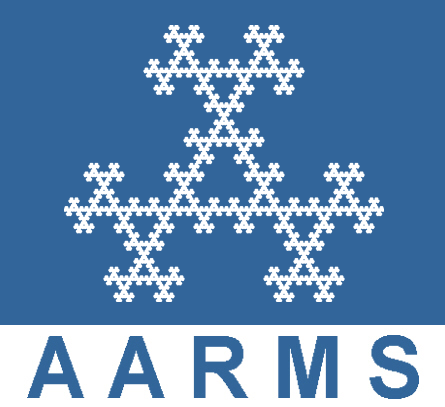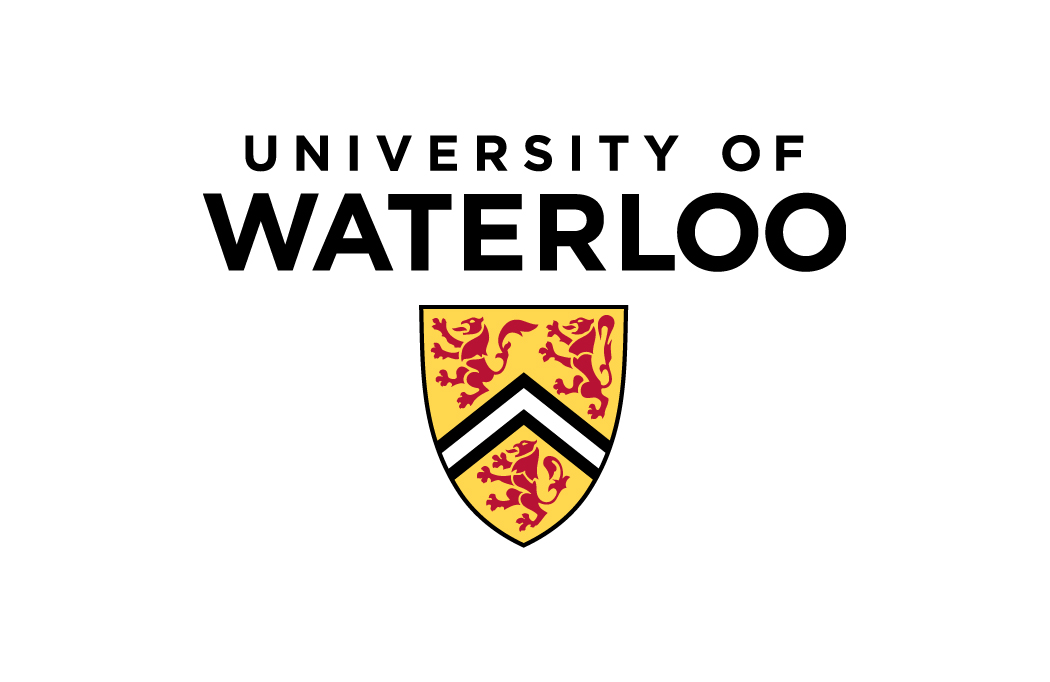2017 CMS Winter Meeting
Waterloo, December 8 - 11, 2017
Org: Masoud Khalkhali (Western University) and Ilya Shapiro (University of Windsor)
[PDF]
- PAUL BAUM, Penn State
BEYOND ELLIPTICITY [PDF]
-
The Baum-Douglas isomorphism of geometric and analytic K-homology provides a setting in which the Atiyah-Singer index
theorem can be extended to certain differential operators which are Fredholm but not elliptic. The talk will explain how this
point of view can be applied to solve the index problem for a naturally arising class of differential operators (on closed contact
manifolds) which are Fredholm but not elliptic. This is joint work with Erik van Erp.
- LATHAM BOYLE, Perimeter Institute
The standard model of particle physics from non-commutative geometry: a physicist's perspective [PDF]
-
By viewing it from the standpoint of non-commutative geometry, Connes and Lott, and later Connes and Chamseddine, noticed an interesting feature of the standard model of particle physics. In this talk, I will rephrase this feature in terms that are more familiar to a physicist, in an attempt to better understand the role that non-commutative geometry really plays in the story.
- BRANIMIR ĆAĆIĆ, University of New Brunswick
Principal bundles in noncommutative Riemannian geometry [PDF]
-
Quantum principal bundles have been studied extensively from a Hopf-algebraic perspective since the early 1990s, but adapting this work to the context of spectral triples has only become possible relatively recently. In this talk, I'll sketch out one possible framework for noncommutative differentiable principal bundles with compact connected Lie structure group in terms of spectral triples and their constructive factorisations in unbounded $KK$-theory. This is joint work (in progress) with Bram Mesland.
- GEORGE ELLIOTT, University of Toronto
The Rieffel projection via groupoids (joint work with Dickson Wong) [PDF]
-
The Rieffel projection is both not quite canonical and, perhaps, a little hard to understand. The Rieffel Hilbert module, from which it derives, is perhaps canonical, but is, on the face of it, especially when one considers the algebra-valued inner product, also not that easy to understand.
It turns out that a simple extension of the well-known groupoid underlying the rotation algebra, which itself does not yield a non-trivial projection in the algebra since its object space is connected, has a disconnected space of objects. One of its clopen components corresponds to the unit of the rotation algebra, and its complement corresponds to a projection in a larger, Morita equivalent, C*-algebra with the same K$_0$-class as the Rieffel projection.
This groupoid, consisting of a disconnected version of the cut-down of the groupoid of the Kronecker flow to the figure eight consisting of the union of the two generating circles on the torus, can also be used to construct the Rieffel module directly. One notices that it has a (clopen) copy of the real line on which the cut-down subgroupoid corresponding to the rotation algebra acts, and then the natural module action of the algebra of continuous functions of compact support on the groupoid on the linear space of continuous functions of compact support on the line, arising from (finite sum) convolution, constitutes on completion the Rieffel Hilbert module over the rotation C*-algebra. (This construction yields in a natural way that the module is finitely generated and projective.)
- HEATH EMERSON, University of Victoria
Dirac classes and duality for isometric discrete abelian group actions [PDF]
-
An interesting K-homology class for the crossed-product C*-algebra of a discrete group acting smoothly on a smooth compact manifold is suggested by the Baum-Connes apparatus; we call it the 'Dirac class'. In the first part of this talk we will describe (finite-summable) spectral triple representatives of Dirac classes when the group is abelian and the action is isometric. The commutativity of the group also implies that the Dirac class can be improved to a fundamental class, and in the second part of the talk we discuss progress on establishing KK-theoretic Poincaré duality for these examples, building on work initiated by A. Connes.
- ASGHAR GHORBANPOUR, University of Western Ontario
Ricci curvature in noncommutative geometry [PDF]
-
Spectral formulation of a geometric quantity provides the right passage to
define that quantity for noncommutative spaces. In this talk, we shall show
how the Ricci curvature of an oriented closed Riemannian manifold can be
realized as a spectral functional of Laplacians on the manifold. Using this
formulation we define and compute the Ricci functional and its density for
curved noncommutative tori. The talk is based on recent work ``The Ricci
Curvature in Noncommutative Geometry, arXiv:1612.06688 [math.QA]'' in
collaboration with M.~{Khalkhali} and R.~{Floricel}.
- PIOTR M. HAJAC, IMPAN
Factoring the Chern-Galois character and the homotopy invariance of Hochschild and cyclic complexes [PDF]
-
Goodwillie’s Theorem states that the periodic cyclic homology is invariant under nilpotent extensions. We discuss a special type of nilpotent extensions of unital algebras (called row extensions) for which we prove a stronger result: the homotopy invariance of Hochschild and cyclic complexes. The row extensions appear in abundance. They are always H-unital but generically non-unital and noncommutative. A very specific type of a row extension appears naturally in the construction of the Chern-Galois character. If P is an algebra with a principal coaction, and B is its coaction-invariant subalgebra, then the Chern-Galois character factors through the row extension of B by the nilpotent ideal consisting of the invariant universal differential one-forms on P. When P is a principal comodule algebra, one can identify this ideal with the kernel of the multiplication map restricted to the algebra of the associated Ehresmann-Schauenburg quantum groupoid. Time permitting, we will explore advantages of our constructive homotopy approach to the Chern-Galois character. Based on joint work with Tomasz Maszczyk.
- MOHAMMAD HASSANZADEH, University of Windsor
Hom-Associative Group Cohomology [PDF]
-
We continue to investigate proper homological algebra for non-associative objects. We introduce homology and cohomology theories for a Hom-associative group
G which is a non-associative version of the notion of group. For this, we introduce representation theory of Hom-groups. For certain coefficients, the functoriality of Hom-group (co)homology will be shown. We see that the inverse elements provide
a relation between Hom-group cohomology and homology with coefficients in right and
left G-modules. Furthermore we find a relation between Hom-group (co)homology of G
and the Hochschild (co)homology of Hom-associative group algebra kG.
- IVAN KOBYZEV, University of Waterloo
Cyclic homology of quasi-Hopf algebras and Hopf algebroids [PDF]
-
Using the categorical approach, it is possible to understand the coefficients of Hopf cyclic (co)homology theories (anti-Yetter-Drinfeld modules and contramodules) as centers of some categories. In the talk I will use this idea to describe aYD (contra)modules for quasi-Hopf algebras and Hopf algebroids. Unlike the case of Hopf algebras, some of these formulas would be hard to guess without this approach. The talk is based on the joint work with I. Shapiro.
- RAPHAEL PONGE, Seoul National University
The Cyclic homology of crossed-product algebras [PDF]
-
In this talk, I will present the construction of explicit quasi-isomorphisms that compute the cyclic homology and periodic cyclic homology of crossed-product algebras associated with (discrete) group actions. Of special interest are group actions on manifolds and smooth varieties. In these cases the constructions are naturally related to group homology and equivariant cohomology.
- RUDY RODSPHON, Vanderbilt University
Quantizations and index theory [PDF]
-
One way to describe succinctly local index theory on closed spin manifolds could be the following slogan of Quillen : Dirac operators are a "quantization" of connections, and index theory is a "quantization" of the Chern character. For non necessarily spin manifolds, pseudodifferential operators and their symbolic calculus play a crucial role in the original proofs of the index theorem. However, symbols may also be viewed as a deformation quantization of functions on the cotangent bundle, which has led to other fruitful approaches to index theory through a "quantization" process. Methods used in these two different quantization pictures do not seem to be quite related a priori. The upshot of the talk will be to see that these different theories might have more to tell to each other, and that far reaching index problems may be solved very directly from such an interaction.
- XIANG TANG, Washington University in St. Louis
A new index theorem for monomials ideals by resolutions [PDF]
-
We prove an index theorem for the quotient module of a monomial ideal. We obtain this result by resolving the monomial ideal by a sequence of Bergman space like essentially normal Hilbert modules. This is joint work with R. Douglas, M. Jabbari, and G. Yu.
- MITSURU WILSON, Universidad de los Andes
Pseudo-differential calculus for the deformation quantization of Hopf algebra [PDF]
-
Connes’ definition of scalar curvature for a spectral triple using the heat kernel formalism is quite natural yet general. Besides the computational complexity, an important prescription is to find a suitable pseudo-differential calculus for a spectral triple to approximate the expression $(\triangle - 1)^{-1}$. In general, this is a quite difficult task but in some cases, as computed in the case of noncommutative torus, it can be achieved. I will discuss our development of pseudo-differential calculus on the deformation quantization of compact Lie groups. This work is in progress with a Ph.D. student Carlos Rodriguez.
- FERESHTEH YAZDANI, University of New Brunswick
Hopf-cyclic Cohomology of Connes-Moscovici Hopf algebras with nontrivial Coefficients [PDF]
-
It is a joint work with B.Rangipour and S.Sütlü.
I will show that the space $\Omega_n^{\leq 1}$ of formal differential $\leq1$-forms on $\mathbb{R}^n$ has an (induced) SAYD module structure on the Connes-Moscovici Hopf algebra $\mathcal{H}_n$. Then we will see that the Hopf-cyclic cohomology $\mathcal{H}_n$ with coefficients in formal differential forms is identified with the Gelfand-Fuks cohomology of the Lie algebra $W_n$ of formal vector fields on $\mathbb{R}^n$. Furthermore, I will introduce a multiplicative structure on the Hopf-cyclic bicomplex, and we will see that this van Est type isomorphism is multiplicative. I finally show the whole machinery in the case $n=1$; by pulling back the multiplicative generators of $H^\ast(W_1,\Omega_1^{\leq1})$ to $H^\ast(\mathcal{H}_1,\Omega_{1\delta}^{\leq1})$.





